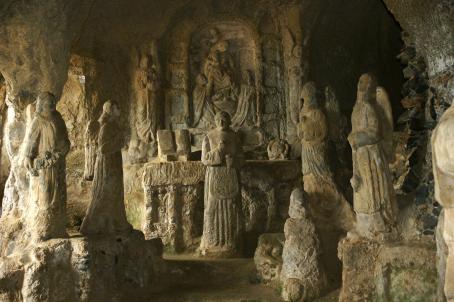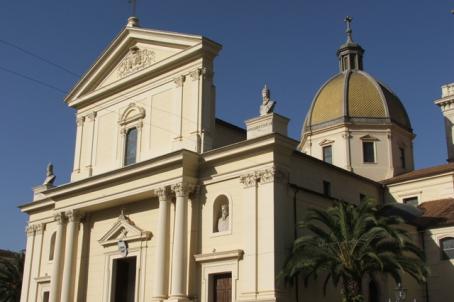Tropea sanctuary
The church of Santa Maria dell'Isola was probably founded in the 11th century, on a rock inhabited since the 7th-8th centuries by hermits. After the earthquakes of 1783 and 1905, very little of the original structure was preserved.
The church of Santa Maria dell'Isola was probably founded in the 11th century, on a rock inhabited since the 7th-8th centuries by hermits. After the earthquakes of 1783 and 1905, very little of the original structure was preserved.

The church of Piedigrotta was entirely excavated from the 18th century in a tuff cliff. First a fishermen's chapel, the cave became a church that grew at the turn of the 19th and 20th centuries. Inside there are several groups of sculptures that furnish it, also in volcanic tuff.

Palmi Cathedral was first mentioned between 1310 and 1311. The church, destroyed by an earthquake on 5th February 1783, was rebuilt between 1740 and 1743; extensions and modifications were carried out in March 1786. After being rebuilt following an earthquake, St. Nicholas again suffered severe damage in the 1908 earthquake, so that the building was demolished in 1909. The present building was consecrated in 1932.

Nicastro Cathedral was built in the Byzantine period in an unknown place. In 1100, Countess Eremburga, niece of Robert Guiscard, built a new cathedral dedicated to Saints Peter and Paul, majestic and in Romanesque style. This building collapsed in the earthquake of 1638, and in 1640 Bishop Giovan Tommaso Perrone began building a new cathedral on the present site. At the end of the 19th century, the 17th-century facade completely lost its architectural character, and the facade was modified again in 1925, resuming its current design. In 1935, the maiolica-covered dome was raised and in the middle of the 20th century, the present staircase was built.